Armenian Women Artists (AWA) is an educational and historically oriented Instagram page that aims to bring awareness and recognition to Armenian women artists, both in Armenia and the diaspora. I created the account in 2018, prompted by an academic interest of mine in Armenian art history and a personal desire to learn more about the artistic and social contributions of Armenian women.
Formally trained as an archivist and researcher, I am both personally and professionally dedicated to the preservation and accessibility of cultural heritage, and Instagram has served as an appropriate platform to present these often-underrepresented figures from our collective history. What began as a modest attempt to brush up on my own lack of knowledge and awareness of Armenian women artists has transformed into a shared space for recollection, remembrance and a sense of belonging where others can connect with mutual narratives.
The catalyst for the project was the great Soviet artist Mariam Aslamazyan (1907-2006). Inspired by both her paintings and the international respect and acknowledgment she received from her work as a cultural diplomat, I soon discovered a whole world of Armenian women who made a significant impact not just in Armenian society, but in the broader culture society that they were a part of, be it Russian, Ottoman, Persian, Soviet or American.
Unsurprisingly, given the geographical range of the Armenian diaspora, both leading up to and following the Armenian Genocide, the women that I feature come from all over the world, often the first among their peers to pave the way for a variety of creative pursuits and social developments. From Iraq’s first concert pianist and first female composer Beatrice Ohanessian (1927-2008), to Iran’s first woman to perform on stage and direct a play Varto Terian (1896-1974), to France’s first French female oceanographer Anita Conti (1899-1997), Armenian women were perceived as intellectual and moral leaders among Armenian and non-Armenian audiences alike.
In addition to geographical range, it’s important for me to show a range of socio-economic and cultural backgrounds, individuals who were able to overcome struggles and challenges in life, be it economic, political or social. I also wanted to push back against certain strands of contemporary feminism, which, from my perspective, can tend to oversimplify the role of gender in society. I strive to share stories where we find women taking responsibility for their lives and, most importantly, where men and women support one another in an egalitarian way towards the betterment of society and culture.
For example, Syrian-born painter, Armine Galentz (1920-2007), who was the only woman artist in Aleppo during her time, always had the support of her husband Haroutiun Galentz (1910-1967) both in Beirut where they met and in Yerevan, where they repatriated in 1946. Despite initially facing harsh criticism from the Artists’ Union of Armenia and after years of financial hardship, they were eventually embraced by the Union. Galentz was featured in several shows, including the first exhibition of works by Armenian repatriates, where she was the only female participant. She held her first solo exhibition in Yerevan in 1962.
Although at times controversial, I also try to showcase so-called “hidden” Armenian artists from Turkey, who kept their Armenian identity hidden to survive and thrive in Turkish culture and society. Renowned Turkish folk singer Zehra Bilir (1913-2007) was born Eliza Ölçüyan but lived her life as a Turk, choosing not to publicly embrace her Armenian roots. By collecting and sharing these stories, my aim is to challenge our understanding of the parameters of Armenian identity by showcasing a diverse array of Armenian women, artistic practices and their experiences.
To this end, there is a quote I like very much by one of my favorite minority French-Canadian women writers, Gabrielle Roy: “Could we ever know each other in the slightest without the arts?” This sums up so succinctly what I believe is both the progressive and critical function of the arts; at the highest level, art is not just a kind of individual expression, but also a kind of intellectual diplomacy. I don’t mean we always have to agree, but we should at least know how to engage with and understand each other. I think art is at its most successful, impressive and universal when its artistic ambitions are high, and its social pretensions modest, as outlined by Roy. Cultural and intellectual exchanges allow us to understand what makes each other distinct.
Moving forward, I’d like to continue to engage in this spirit and interact with artists and curators on a more intimate level. I’m open to publishing a book or organizing public exhibitions, workshops and lectures with an eye towards developing an online database where researchers, artists and educators can access this knowledge. Ideally, this engagement will help facilitate dialogues and interactions.
Today, perhaps more than ever, Armenians all over the world are feeling a sense of cynicism and hopelessness when it comes to the preservation of our cultural identities. However, despite the constant tragedies and threats we face, we sometimes need reminders of how far we’ve come and the potential we have within ourselves to persevere and succeed, as our ancestors have done before us. The contributions made by Armenians, both men and women, are endless, and I feel proud to be part of a community where the role of art and cultural heritage is seen as essential in shaping our society. I couldn’t be more grateful for the support and positive feedback I’ve received, and I’ve been lucky to encounter many thoughtful, creative and engaged individuals through the account.

Painter Vava Khatchadourian was born on February 12, 1895, in Trebizond, Ottoman Empire (present-day Trabzon, Turkey) and spent most of her childhood in Batumi. Prior to pursuing an artistic career, Khatchadourian lived in Vienna and Paris, where she modeled for the famous French painter Henri Matisse and others.
In 1920, she married famed painter and muralist Sarkis Khatchadourian in Tiflis. After extensive travels around the world, including several years living in India and Iran, Vava and Sarkis settled in New York to begin a new life in 1941. She started painting in 1945. Her works can be found at the National Gallery of Armenia and private collections. She died of cancer in 1984 in Manhattan, New York.
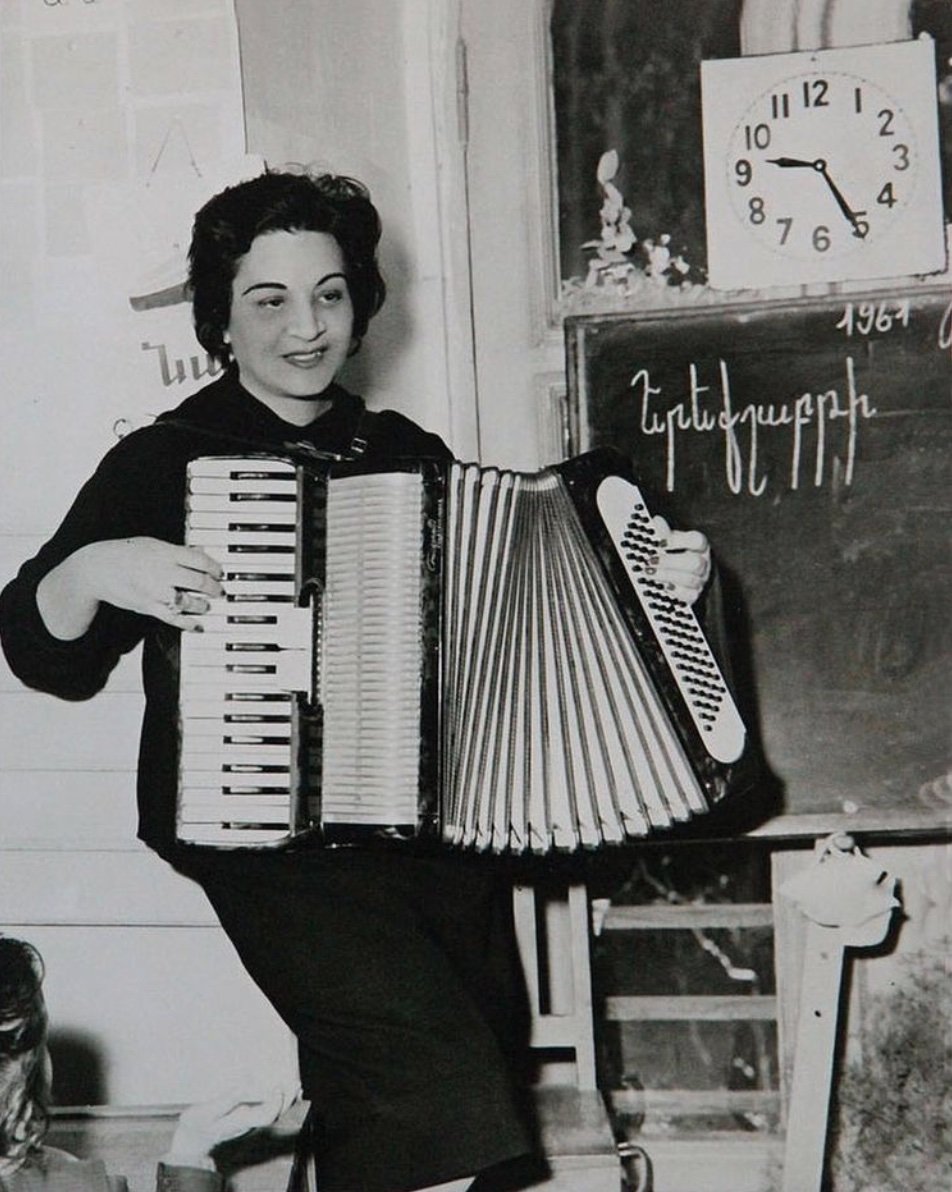
Elbis Ferahian was born in 1907 into a cultural family in Tehran, Iran. After completing her primary education in Iran, she moved to Vienna with her family. Due to the outbreak of World War I, the Ferahian family settled in Tbilisi, where Ferahian completed her secondary education. She later settled in Soviet Armenia where she worked at a kindergarten.
After years of teaching in Yerevan and Tbilisi, Ferahian returned to Iran in the early 1930s. She taught at the Iran Bethel School for Girls and shortly after established her own kindergarten. In 1936, Reza Shah Pahlavi, then Prime Minister of Iran, ordered the closure of Armenian schools in Iran, at the request of Turkish president Kemal Atatürk. Ferahian’s kindergarten was thus subject to the decree.
In 1941, Armenian schools were allowed to reopen after the overthrow of Reza Shah, and Ferahian was invited to establish an independent Armenian kindergarten by the board of trustees of the Davidian School, which opened in 1942. The kindergarten, called “Koushesh” (Armenian for kindergarten) operated under her direct supervision for 35 years. It continues to be one of the most important educational centers for Armenians in Iran.
In addition to her educational activities, Ferahian also composed children’s songs and hymns, which are still performed by and taught to children today. Ferahian died in 1994 in Tehran and was laid to rest at the Nor Burastan Cemetery, the Armenian cemetery.

Salma Kouyoumjian was born on December 26, 1907 in Ruse, Bulgaria. Her family originated from Western Armenia and was forced to flee the Ottoman Empire in 1907 as the policies of Abdul Hamid II’s government against the Armenians intensified. She earned a bachelor’s degree in archaeology at the École du Louvre in Paris.
Following her studies, Kouyoumjian served as one of the three secretaries of the Société des Études Iraniennes et de l’Art Persan for four years. During this time, she met and married Mohsen Moghadam, an Iranian painter and archaeologist and one of the founders of the Faculty of Fine Arts of the University of Tehran.
Kouyoumjian studied Iranian archaeology of the Sassanid period and archaeology of India and China. She and her husband were both hired by the Iranian Ministry of Culture and served as technical inspectors of the Antiquities Authority during the French excavations in Susa, Khuzestan Province, Iran.
Following her retirement from the Ministry of Culture on June 20, 1964, Kouyoumjian worked in The Parliamentary Library of Iran. She passed away in 1990, four years after her husband. She is buried in the Armenian cemetery in Tehran. Their home in Tehran was transformed into the Moghadam Museum and was bequeathed to the University of Tehran in their memory.
The late French actress, writer and photographer Hermine Karagheuz was born on December 2, 1938 in the southwestern suburb of Issy-les-Moulineaux, Paris, France, into a family of exiled Armenian orphans with little means.
She made her theatrical debut in Liliane Atlan’s adaptation of “Monsieur Fugue” by Roland Monod in 1967. Through a series of encounters and small roles on stage, she met the notable French actor and director Roger Blin (with whom she later shared her life) and performed in several of his creations. Critics noticed Karagheuz in 1973 after she appeared on stage in Patrice Chéreau’s mythical play adapted from Pierre de Marivaux’s now legendary “La Dispute” at the Gaîté Lyrique in Paris. She would go on to perform in some 30 productions from the mid-1970s to the early 2000s.
In addition to theatre, she also made a few furtive film appearances, first in Francois Billetdoux’s “The Wednesday Play: Pitchi Poi” in 1967, and later in smaller roles for Jacques Baratier, Joseph Losey and Jeanne Moreau. But it was in front of Jacques Rivette’s camera that the actress truly revealed herself, embracing the surrealist roles of the French New Wave director.
A multifaceted and multi-talented artist with an unforgettable screen presence, Karagheuz reflected her vision of the world in her own creations. Sadly, she passed away this past April 30 in Paris at the age of 82.
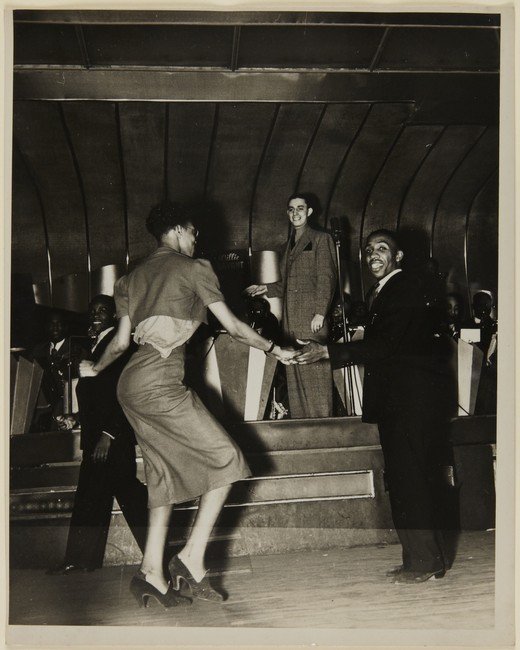
Lucy Ashjian was born in 1907 in Indianapolis to Armenian refugees who had fled the Ottoman Empire. She grew up watching the rise of fascism throughout Europe and reading about the Armenian Genocide of 1915.
After moving to New York City in the 1930s, Ashjian and her husband, journalist Charles Preston, joined the Communist Party, a common affiliation of intellectuals and progressives in that period. In 1937, Ashjian, who developed a serious interest in photography, graduated from the Clarence White’s School of Photography.
That same year Ashjian joined the legendary New York Photo League, a progressive collective of amateur and professional photographers who saw documentary photography as a vital element of the movement for radical social change. The League, which included greats such as Lewis Hine, Paul Strand and Berenice Abbott, had its origins in the Workers International Relief, a communist organization based in Berlin which formed in 1921.
Ashjian was an active and respected member of the League, serving two terms as vice president and participating in several of the League’s best-known projects, including “Harlem Document,” which documented the historical African-American neighborhood of Harlem. However, despite having played a prominent role in the world of New York photography, Ashjian is yet to fully be recognized for her talent and remains a relatively unknown figure.
Sadly, her promising career was cut short after moving back to Indianapolis in 1943 after her husband abandoned her and their young child. After her passing in 1993, only 150 prints and a box of negatives were left as evidence of her contribution to the history of photography. Her works are held in the permanent collections of the Met Museum, the Center for Creative Photography and the Museum of the City of New York.
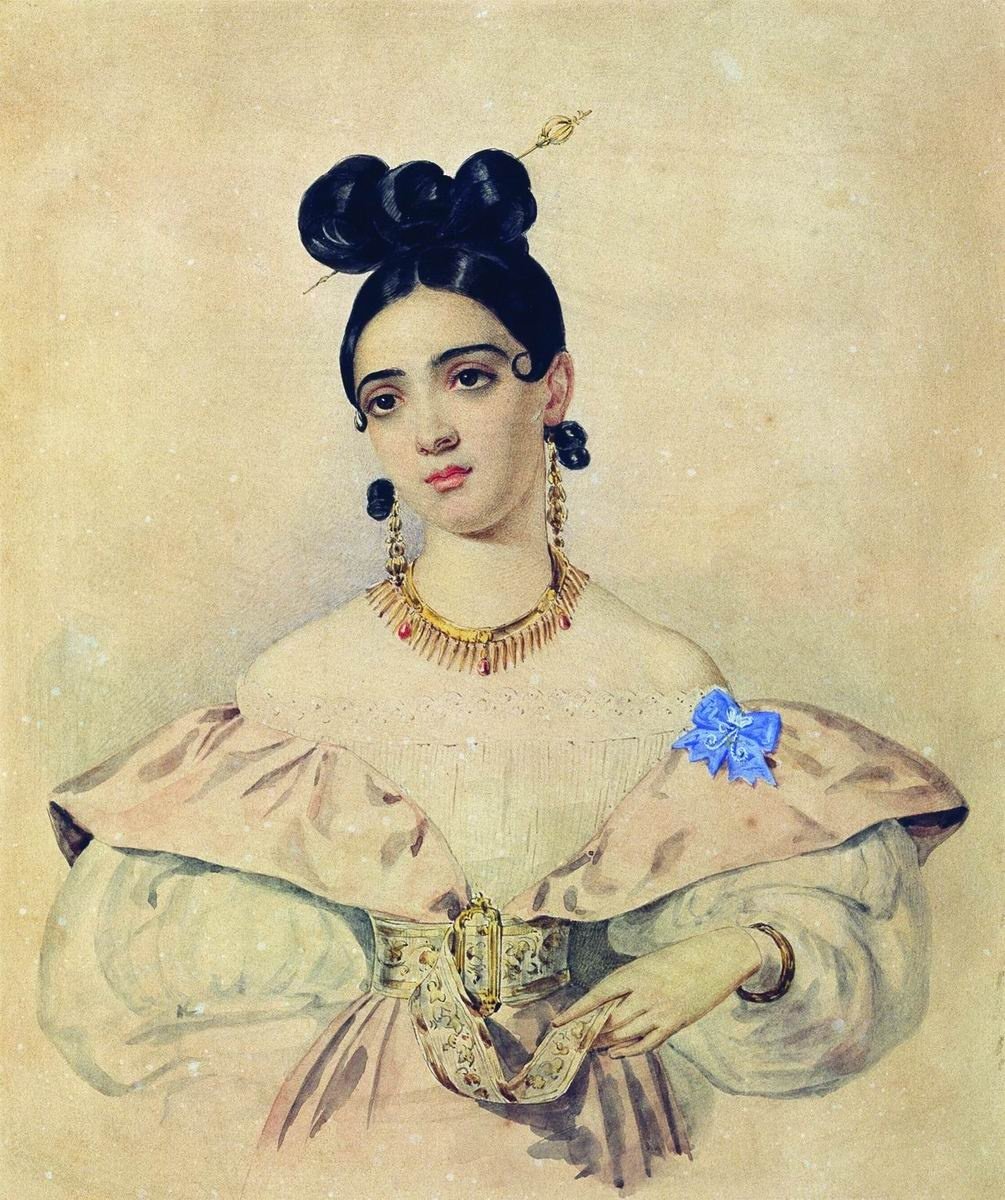
Anna Davidovna Abamelik-Lazareva (Lazarian) was a Russian-Armenian translator, lady-in-waiting, socialite and public figure. She was born on April 15, 1814 in St. Petersburg, Russian Empire into the Abamelik family, a noble family of Armenian origin in the Kingdom of Georgia, and then in the Russian Empire.
From an early age, Abamelik-Lazareva was passionate about literature and the study of foreign languages. She received an excellent education and was fluent in English, French, Armenian, Georgian, German and Greek. She devoted her life to literary translations and translated poems by Alexander Pushkin and Mikhail Lermontov, amongst others, from Russian into English and French. She also translated works by prominent European poets, such as Johann Wolfgang von Goethe and Lord Byron, into Russian. In addition to her translation work, she was also in charge of several educational and musical institutions in St. Petersburg.
She was married to the governor of Kazan, Irakli Baratinsky, the brother of Russian poet Yevgeny Baratinsky. Having had no children, Abamelik-Lazareva dedicated the last few years of life to charity, collecting donations during the Crimean War to help support wounded soldiers. She died in St. Petersburg on November 25, 1889.
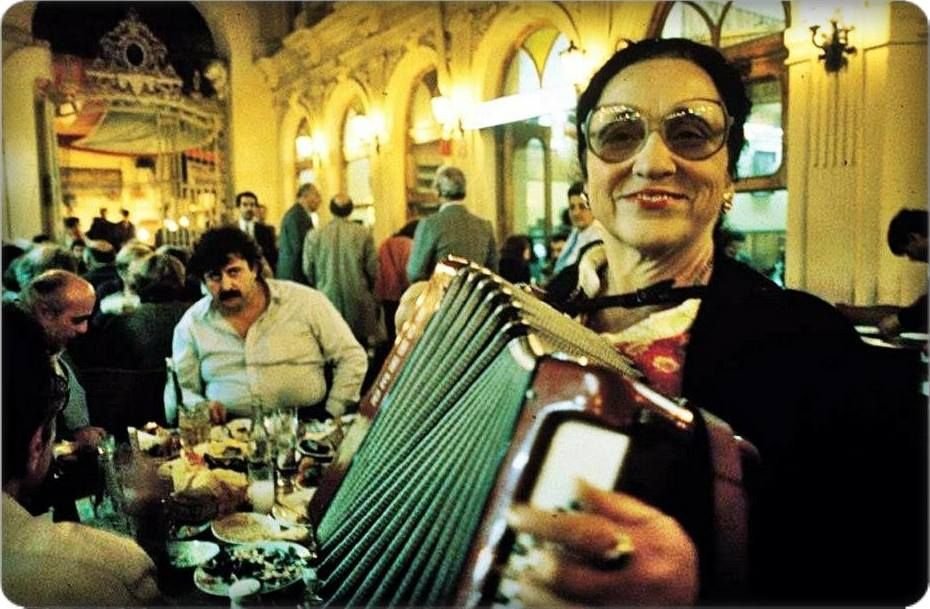
Born in 1926 into an established Armenian family, Madam Anahit spent most of her life in and around the district of Beyoğlu, once the lively cosmopolitan center of the old city. At the age of 16, while attending the Esayan Armenian School, she joined the school choir where her passion for music developed. She was first introduced to the accordion on Heybeliada, one of the Princes Islands near Istanbul, where she spent her summers as a young girl. Shortly after, she started taking lessons and continued to play until the end of her life. A staple of Çiçek Pasajı, Madam Anahit would play for guests dining at the various historic cafes, tavernas and restaurants.
As the years passed, however, the demographics of Beyoğlu changed and Madam Anahit’s presence was no longer welcome. The respect and admiration that she had garnered from the locals had vanished. In addition, in the 1980s, the city of Istanbul seized and destroyed the apartment she had inherited, forcing her to live elsewhere. Despite these challenges, she remained determined to fight for her survival as a musician.
An avid animal lover and rights advocate, she was also the vice-president of the Animal-Lovers Economic and Agricultural Party, which aims to stop the poisoning and shooting of dogs and cats both in Istanbul and other cities. She once stated, “People who can’t treat animals properly can’t treat people properly.”
Although she did not receive the recognition she deserved, Madam Anahit is remembered as an indispensable part of Beyoğlu’s cultural heritage. She passed away in Istanbul on August 29, 2003 and was laid to rest in the Armenian cemetery in Şişli.

Zabelle Boyajian was born on March 27, 1873 in Diyarbakir, Ottoman Empire, the daughter of Baron Thomas Boyajian, British Vice-Consul in Diyarbakir and Harput, and Catherine Rogers, a descendant of the English poet Samuel Rogers. She received her education in Armenian and English, while also learning Turkish, French and Italian.
In 1895, her father fell victim to the Hamidian massacres (1894-1896). Following this tragic life-changing event, Boyajian moved to London with her brother and mother. She enrolled at the Slade School of Fine Arts where she started writing and illustrating her own books. She held her first solo exhibition in 1910 in London and went on to publish and translate several books which highlighted the enduring spirit of Armenia and its cultural heritage. An active member of the Armenian community, Boyajian was a significant driving force behind cultural life and fundraising during WWI.
Boyajian is probably most remembered for the illustrated anthology “Armenian Legends and Poems.” Introduced by Viscount James Bryce, the anthology includes a collection of translations of Armenian literature from the Middle Ages interspersed with poetry from the 19th century. In addition to translating and publishing Armenian poems, Boyajian was also a Shakespeare enthusiast and participated in one of the many commemorative festivals that took place on the 300th anniversary of his death on April 23, 1916. She recited her personal ode to the Bard titled, “Armenia’s Love to Shakespeare” and wrote essays on Shakespeare as well as comparative works on English and Armenian literature. She died on January 26, 1957 in London, England.
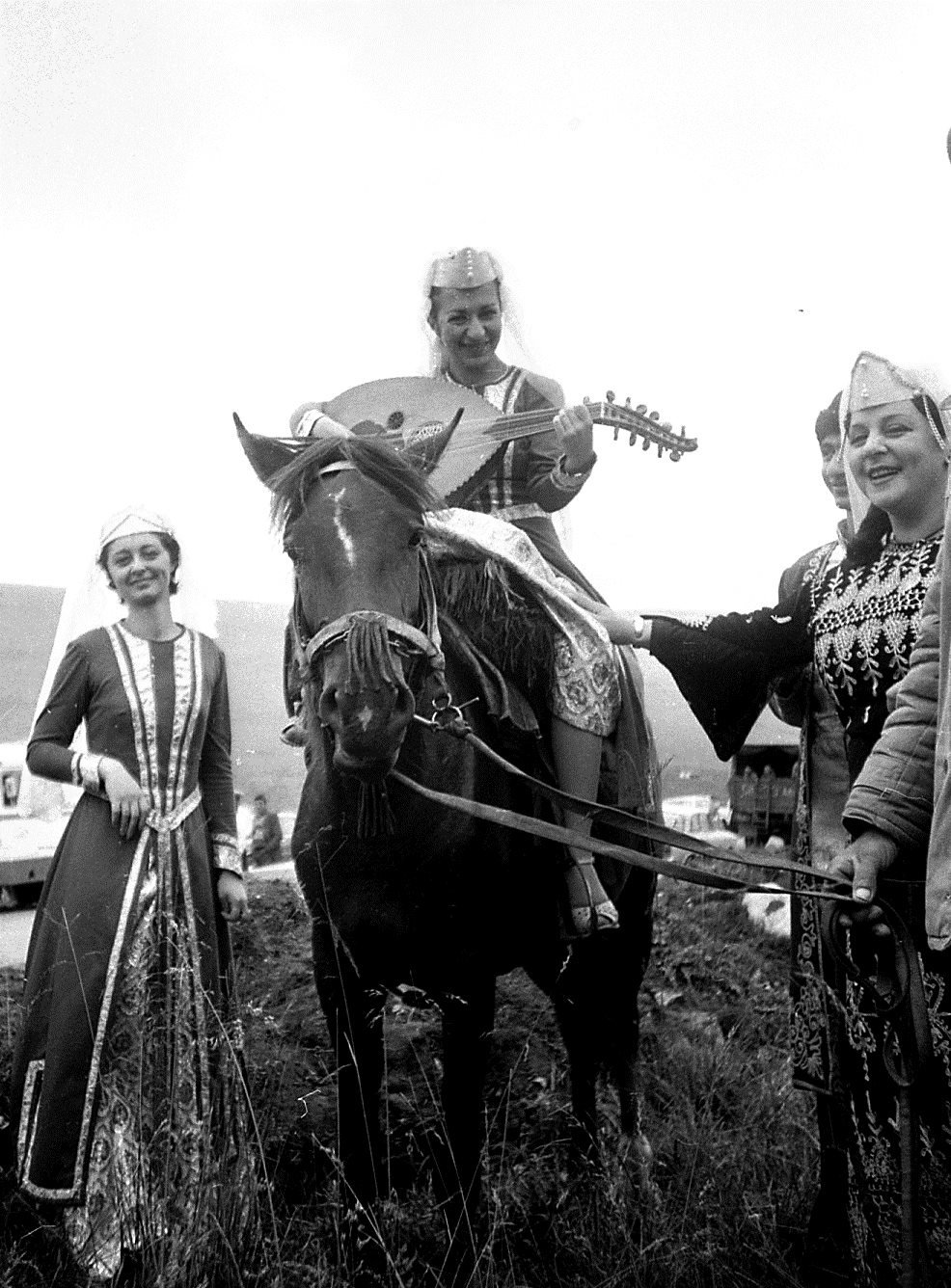
Lilit Karapetyan was born on January 28, 1963, in Yerevan, Armenian SSR, into a family where music was highly valued. She studied at the Anton Chekhov School No. 55 in Yerevan, and at the same time, she graduated from the guitar class of Zhanna Sheldzhyan at the Tigran Chukhajian Music School. In 1980, she started studying the oud at the Komitas State Conservatory of Yerevan.
In 1981, while still a student, Karapetyan became one of the founding members of the Sharakan Ancient Music Ensemble (later named Tagharan Ancient Music Ensemble) where she played the oud, lute and guitar. She toured with the ensemble in concerts around Armenia and musical centers of the former Soviet Union, in addition to Uruguay, Brazil and Argentina.
As a performer, she made many adaptations and transcriptions of medieval and modern Armenian and European composers for the oud and guitar. In 1986, she participated in the first international competition of folk instruments in Baku where she won second prize.
Due to illness, Karapetyan gave up her performing activities in 2003 and dedicated her time to teaching the oud and classical guitar until the end of her short but fruitful life. She died on October 22, 2006 in Yerevan, Armenia at the age of 43.
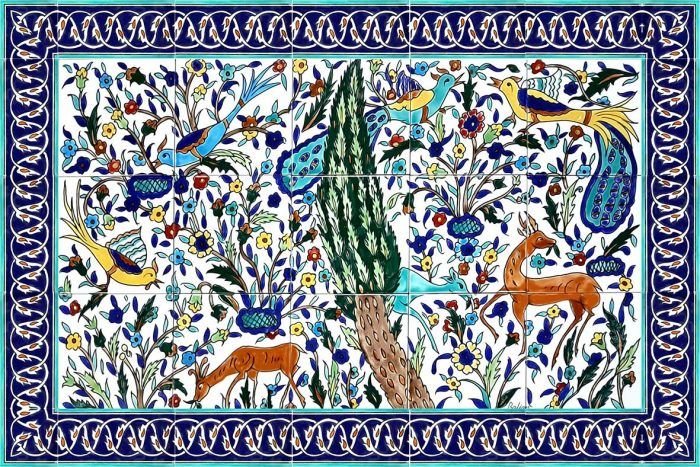
Artist and ceramic painter Marie Balian was born on January 25, 1925, in Marseille, France. Her family hailed from the small town of Kütahya, Ottoman Empire (present-day Turkey), which is known for its historical Armenian ceramic industry.
She lived in Lyon with her mother Manoushag and her sister Haigouhi. Demonstrating an early interest in fine art, Balian studied at the École nationale supérieure des Beaux-Arts where she received several first prizes. However, due to financial difficulties, she was unable to finish her degree.
In 1954, she met and fell in love with Setrag Balian, whom she married a year later in Bethlehem, Palestine. In 1955, the Balians moved to Amman, Jordan where they had three children: Sylva, Neshan and Ohan. From 1964 until 2015, Balian was an indispensable part of her family’s ceramic studio in East Jerusalem, where she served as the master painter. In 2017, after two years of deteriorating health, she quietly passed away in the same studio where she worked for the past 50 years.
Today, the Balian family business is managed by Neshan Balian Jr., the son of Marie and Setrag Balian, and his three children, Kegham, Nanor and Setrag. The famous studio continues to produce unique hand-painted and custom ceramic tiles and pottery items. It remains one of the oldest businesses in existence in Jerusalem.


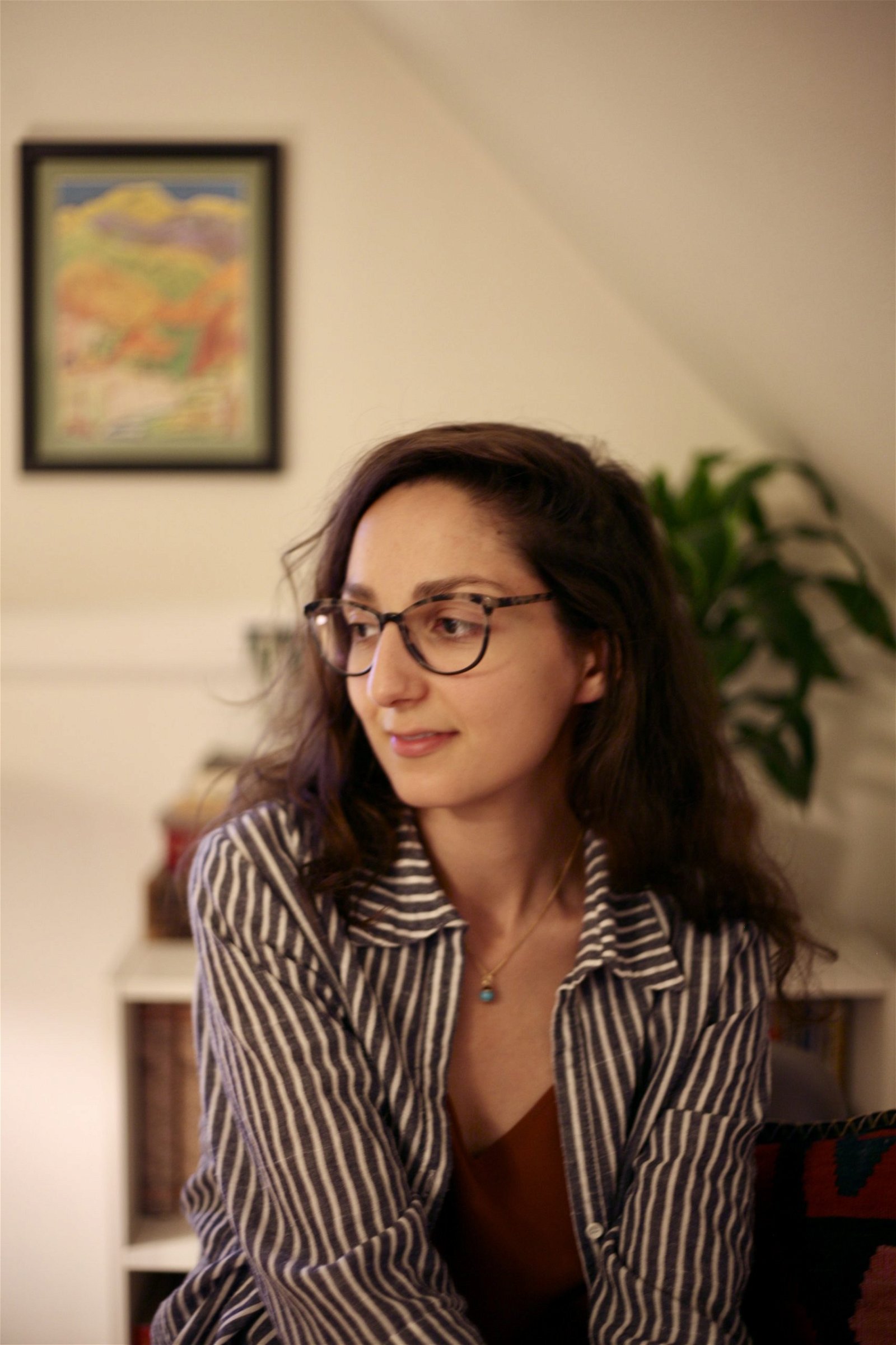
Wow! I went to Elbis kindergarten in Tehran in 1964-65 and remember her playing the accordion vividly. I wonder what will happen to the kindergarten (and the accordion) as the number of Armenians in Iran is dwindling. One small note. On the blackboard the date says 1961 – and that’s a very young Dikin Elbis in the photo circa 1961 – but the caption on the photo says 1967.
Thank you, Yervand, for your kind note. I wonder if you’re also familiar with Bersabeh Hovsepian? She was another Iranian-Armenian educator, humanitarian and founder of Iran’s first daycare centre and kindergarten. Thank you, also for noting the typo, that was my mistake!
Great initiative. Wonderful to keep the memory of these women alive.
Looking forward to the day that all Iranian and Armenians (We are one nation after all) can go back happily and freely to our Fatherland, Stay united, as we were and prosper together.
I’m immensely grateful to Cassandra Tavukciyan for this article.
It has brought to light a subject hidden in the dark… a subject Armenian history has neglected.
It is not only men that make history.
Such a good article, thank you!
Few people know this, but accordion is an Armenian patent. By Cyrill Demian in Vienna in the early 19th century. Demian was a Transilvanian Armenian.
Great article!
Dear Cassandra, it was so interesting to read your notes about Armenian women artists, both in Armenia and the diaspora.
It’s a huge area to be explored and I hope you will continue your work.
As a specialist of Armenian art, I was surprised to read about some Armenian women artists who were unknown for me till now and I discovered them with help of you. So thank you for your efforts!
Thank you, Levon. I appreciate your support! I look forward to continuing this work.
splendid article & on going project : thank you
ruth keshishian cyprus